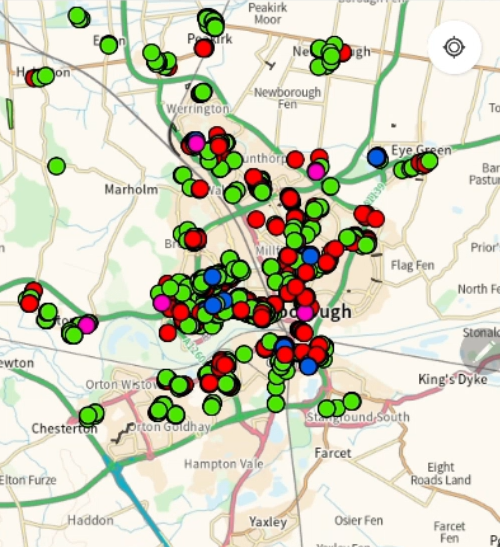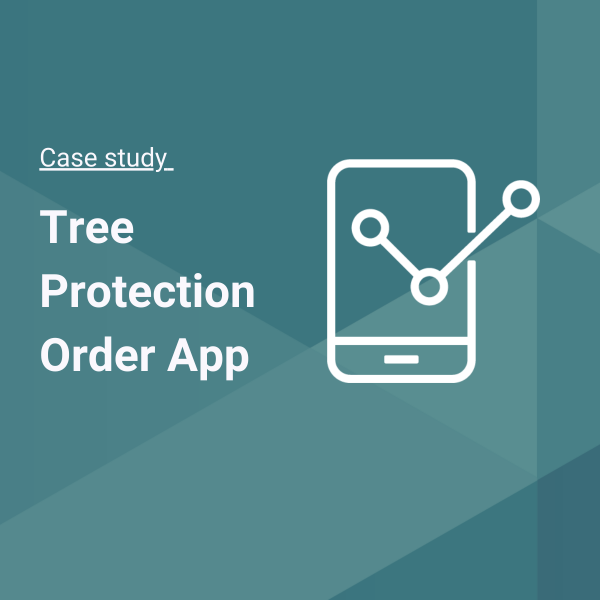Project journey
Motivated by the opportunity to enhance its digital services, Peterborough City Council joined Open Digital Planning to share best practices and collaborate on innovative solutions that would improve customer service. With the support of Digital Planning improvement funding, the council developed the Tree Protection Order (TPO) verification app to improve the accuracy of its TPO data and streamline service delivery.
The app’s primary goal was to simplify the verification process for TPO data during on-site inspections. By enabling real-time data correction, the app allowed Peterborough to record instances where trees had been removed or where spatial inaccuracies needed adjustment. This initiative aimed to enhance the accuracy of the council’s data and provide a foundation for future efficiency improvements.
Software choice
Peterborough City Council chose Arc GIS via a mobile application to power the TPO verification app. Arc GIS was a natural fit, as the council already used it to manage a significant portion of its spatial data. This made it a cost-effective and practical solution that integrated seamlessly with its existing systems.

Discover how the app works
Watch this short video demonstration to discover how Peterborough City Council's Tree Protection Order app works.
User research and feedback
Before the official launch, a beta version of the app was tested during on-site inspections. This early testing phase allowed the team to make small but important adjustments, ensuring the final version met the needs of users.
Initial feedback from consultants using the app has been positive. They found it user-friendly and effective in verifying TPO data. One minor issue raised was visibility difficulties in bright sunlight, where the aerial photography displayed on the tablets or phones was harder to see.
Achievements and benefits
The successful launch of the TPO verification app has allowed the council to have greater confidence in its published data. By verifying the information on the ground, the council can now provide reliable data that reduces the potential for confusion and builds trust with residents and stakeholders.
Without this verification process, publishing the TPO data would have limited value and potentially lead to inefficiencies within the local authority. Now, the council is positioned to provide more accurate information and realise the full benefits and efficiency savings of digital planning tools.
Metrics and KPIs
The success of the TPO verification app is being measured by tracking the number of trees surveyed every two days. This allows the team to monitor progress and ensure the data verification process stays on track.
Next steps
With the TPO survey data nearing completion, there are no immediate plans to further develop the app for this specific purpose. However, the council is exploring the possibility of using similar apps for other datasets, such as Article 4 areas or Listed Buildings, which could also benefit from on-site verification.
Conclusion
Peterborough City Council’s Tree Protection Order verification app highlights the potential of digital tools to enhance local services, improve data accuracy, and deliver meaningful efficiencies. By embracing these digital solutions, the council has laid the groundwork for future innovation and collaboration within the ODP community.
